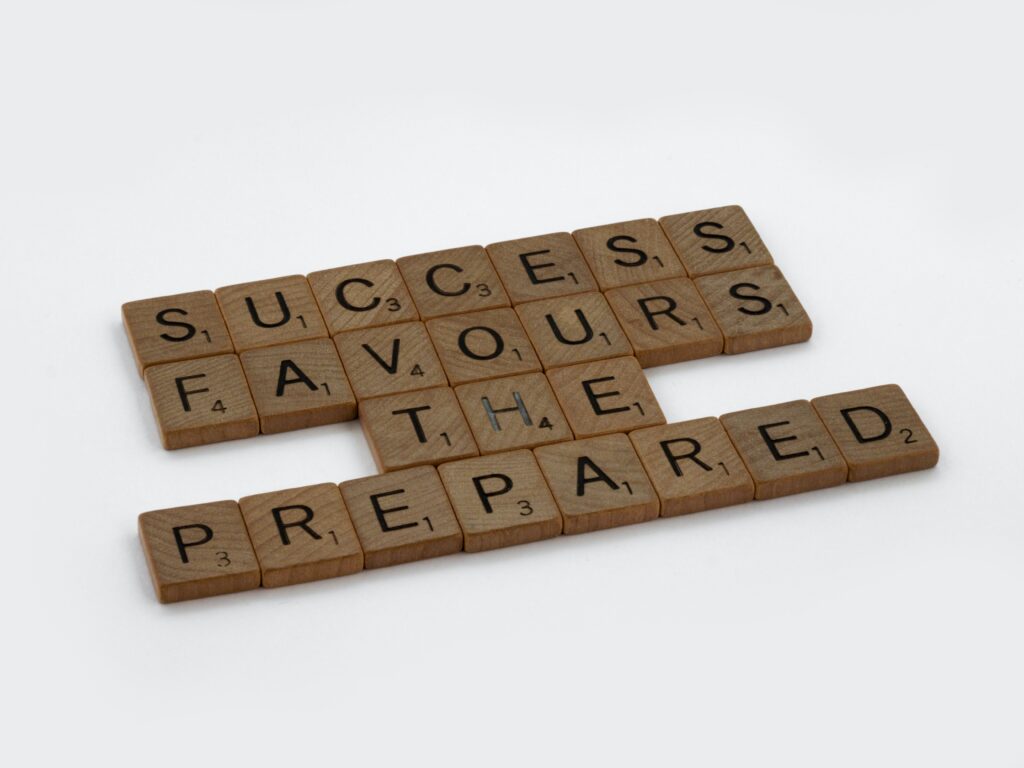Prior to the Start of the Semester
If challenging dialogues are to be an important part of your course, it is essential to begin planning prior to the start of class. In addition to the recommendations below, we recommend reviewing the Diversity and Inclusion in the College Classroom report by Faculty Focus (Magna Publications).
Anticipate which topics could be difficult to manage
Think ahead about what topics you are teaching and whether hot moments might be triggered.
- Plan for structuring those moments intentionally.
- Are there readings that include multiple perspectives on the issue?
- Are there opportunities to have students adopt perspectives that may not be their own?
- What skills do students need to be able to successfully engage in the discussion?
Prepare to communicate the learning goals to your students
Know and communicate the learning goals and the connection to the course for each potentially hot topic.
- Keeping the focus of the conversation clear affords the opportunity for you or your students to redirect if the conversation strays.
- Establishing the connection to learning goals can help in determining what kinds of questions most effectively help students meet them.
Include a decorum statement
Develop a decorum statement that describes acceptable behavior and be prepared to discuss it with your students on the first day. In doing so, stress the educational benefits of civil discourse.
Below is an example from Idaho State University:
“Because university course work requires focused study and open exchange of ideas, the Department of ______________ expects the classroom to be a place of courteous interaction. The demonstration of mutual respect between teachers and students includes arriving and leaving class at designated times, participating in classroom activities, and adapting to new and varied learning styles and tasks. Academic communication requires that all of us listen carefully to each other (whether we agree or not), and to state our positions with clarity and our disagreements with tact.”

Early in the Semester
Facilitate a code of conduct exercise
As a supplement to- or replacement of a formal decorum statement, ask the students to establish their own expectations for discussions and classroom behavior. This technique and others are described in the Start Talking handbook developed by the University of Alaska Anchorage.
Develop Rules
- Divide the students into smaller sub-groups of three to five individuals.
- Ask them to make a short list of desirable and undesirable behaviors.
- Bring everyone back together and ask the groups to share their lists.
Achieve Consensus
Combine similar statements to create a list in each behavioral category that the class can agree on. Save them and refer to them during the semester.
Determine Sanctions
Using a similar process, ask the students to develop sanctions for violating the rules. Be prepared to negotiate the penalties if the recommendations are harsher than expected.
Begin building community, trust, and a supportive climate
The relationships students have in the classroom with each other and with you need to be created intentionally and nurtured.
- On the first day, introductions can be shaped to be a little more personal than just names and majors while not being intrusive.
- From the beginning, model the kinds of behaviors you would like to see.
- Going forward, scaffold activities to foster relationships among students each week.
Help students develop skills for productive conversations
Practice and encourage the use of active listening and consciously teach and model skills such as paraphrasing, summarizing, and building on each other’s thoughts.
Start with lower-stakes conversations
Start early in the course with lower-stakes conversations, and build to more difficult ones.
- This approach gives students the opportunity to build trust and gives you time to help them develop their skills.
- In doing so, vary the types of questions posed: hypothetical, experience-based, opinion-based.

Topic Preparation
Consider possible origins of student views
In some cases, students may respond to a discussion as a personal challenge if their views are closely tied to their personal identities, influenced by members of their families, or connected to religious or moral beliefs. Approaching a topic delicately and providing reading materials that objectively discuss varying views is ideal.
Focus on your goals
When preparing to discuss the topic, be ready to remind students of why the conversation is happening and what learning outcomes you expect.
Leverage pre-discussion assignments
Have students complete an assignment beforehand that helps them understand their own feelings as well as the potential views of their classmates. Pre-discussion homework encourages self-reflection and allows students to do some logical thinking before emotions surface during a heated discussion.
Prepare students with disciplinary models for thinking
If you are wanting them to learn how someone in your discipline discusses these matters, be certain to spend time overtly explaining and modeling those disciplinary processes, and make sure the discussion practices those models, prompting students as needed. For example, is there a certain type/level of evidence that you expect them to apply to their reasoning? Are there certain theories/concepts that you want them to apply to their arguments? (Managing Difficult Classroom Discussions – Indiana University Bloomington)

Difficult Dialogue Strategies
Get comfortable with silence
Use a period of silence as a technique to encourage students to reflect on the topic and plan their responses.
- Allow silence to exist without filling it yourself or panicking!
- Consider using intentional moments of silence during a difficult dialogue to create space for students to reflect on the responses provided by their peers.
Try a modular debate
The modular debate is one of several strategies shared by the American Psychological Association and the basic steps are to:
- Select a topic involving multiple viewpoints.
- Assign your students to roles.
- Provide students with time to research the topic, come up with a position that represents their role, and defend their view.
- Open the floor for classroom discussion.
The intent of the exercise is to model real-life complexities and allow students to see different views in a non-threatening manner.
Give a 10-minute survey
When a difficult topic arises in class, ask your students to anonymously write down what they are thinking and feeling and to raise any questions they may have.
Next, summarize the viewpoints and read the summary back to the class. This process provides a forum for all students to express themselves and enables classmates to hear a diversity of viewpoints from their peers.
Try a standing survey
A standing survey involves having students express their opinions by moving across the room in response to a topic that has been presented by the instructor as a declarative statement. The instructor may read the statement, and then tell students to “Stand on the left if you agree with the statement, on the right if you disagree, and in the middle if you are undecided.” (Shapiro et al., 2014, p. 74).
Use the think-pair-share method
Think-pair-share is an activity in which the instructor poses a question, students consider their responses then pair with another student to discuss their thinking before sharing it with the class.
This is a good exercise to consider when entering into a dialogue on a difficult or controversial topic since the technique requires students to reflect on the topic for a period of time prior to discussing it with a wider audience.
Delay and revisit
If a classroom discussion becomes overly heated, you may want to take a step back and discontinue the immediate conversation with the intent of continuing the discussion during the following class. This will provide students with an opportunity to complete further research and preparation.
If a discussion is going to be temporarily stopped, however, it is important to explain the purpose of the delay. In addition, providing additional research material would be ideal.


De-Escalation Strategies
If a difficult discussion becomes overly heated and a student begins to act out, keep the following information in mind:
- If a student is hostile toward you, ask yourself if you’ve done anything to contribute to the hostility, and own it.
- Recognize that students are coming into the classroom with their own histories and issues (Warren, 2011).
- Consider using the OTFD framework described on the Washington University in St. Louis website.
- If the situation escalates, remain calm and seek to regain control of the setting by requesting compliance from the student in concrete terms.
- If the student is struggling to regain their composure, remind them of the established ground rules and the student code of conduct.
- In the unlikely scenario that a student’s behavior continues to escalate, instruct others to remove themselves from the situation and speak with the student individually or request assistance if appropriate.
Strategies for Facilitating Discussions
In addition to the resources above, this video produced by the Office of Teaching and Learning at North Dakota State University, which shares strategies for the preparation and facilitation of discussions with Universal Design for Learning (UDL) in mind, could be helpful to VTSU faculty members who are exploring new topics or revising existing discussions.
As described in their summary, “civil and productive discussions are an important part of higher education both in the classroom and in today’s work environments.” By incorporating general discussion strategies and tips for moderating sensitive topics, students will be better prepared for future courses as well as life outside the classroom.
Source: https://www.youtube.com/watch?v=tvOf8oWH_0k
Additional Reading
Below are some additional resources related to managing difficult dialogues in the classroom:
- Vermont State University CTLI – Discussion Facilitation
- Indiana University Bloomington CITL – Managing Difficult Classroom Discussions
- University of Alaska Anchorage – Start Talking: A Handbook for Engaging Difficult Dialogues in Higher Education
- American Psychological Association – Difficult Dialogues: Sample Exercises
- Vanderbilt University – Teaching Race: Pedagogy and Practice
- Faculty Focus (Magna Publications) – Special Report: Diversity and Inclusion in the College Classroom
- University of Michigan CRLT – Responding to Difficult Moments
- Columbia University CTL – Navigating Heated, Offensive, and Tense (HOT) Moments in the Classroom
- Derald Wing Sue, PhD – Facilitating Difficult Race Discussions: Five Ineffective Strategies and Five Successful Strategies
- LinkedIn Community – What are some effective ways to use silence in a difficult conversation?
